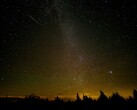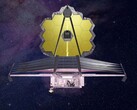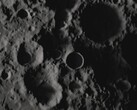For centuries, humans have wondered whether they are alone in the universe. And although no concrete evidence has yet been found, this could change in less than four years thanks to a revolutionary telescope.
As a result, we must turn to the Extremely Large Telescope, which is currently under construction in Chile. And its size is impressive, with a diameter of 39 meters, and that's not all, because it will also be able to capture more light than the James Webb Space Telescope.
Regarding his mission, it will have to detect the biosignatures of numerous exoplanets, in order to determine if life has developed elsewhere in the universe. And in this field, it also surpasses all other devices, because according to a study conducted by Dr. Miles Currie and Victoria Meadows of the University of Washington, an observation of 10 hours will be enough to have results.
An exoplanet more interesting than the others
The universe is vast, and many exoplanets have been discovered over the years. But there is one that has interesting characteristics.
This is Proxima Centauri b, an exoplanet located 4,2 light-years from Earth and which is in the habitable zone of its star. Thus, it could have liquid water, a stable atmosphere, and a temperature that would allow life to develop there.
Of course, other exoplanets will be observed and studied with the help of this new telescope, which will make its first observations in early 2029. And even if it fails to find extraterrestrial life, it could help us better understand the world around us.

























